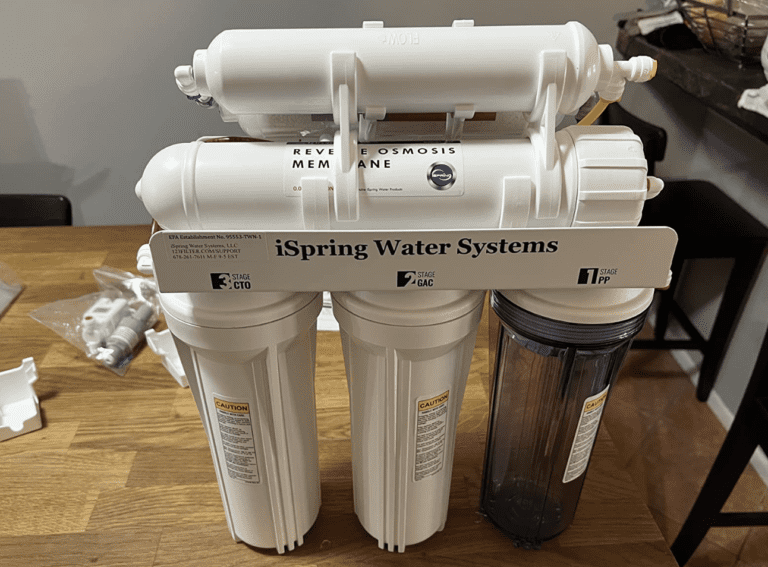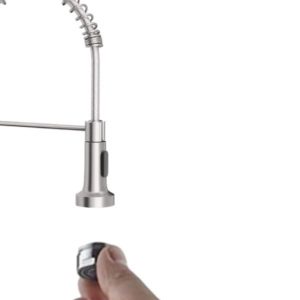Introduction To Reverse Osmosis Systems
Reverse osmosis is an effective water filtration technology that uses a semipermeable membrane to remove impurities from drinking water. It works by applying pressure against the natural flow of acidic liquid, forcing it through a highly efficient filter that traps and removes several types of particles, including microbes, metals, and other contaminants. Reverse osmosis systems can be used both commercially and domestically.
Domestic reverse osmosis water filters are installed under the sink in order to provide clean drinking water throughout your home. These units are typically simple to install and maintain and can offer a range of benefits such as improved taste, odor removal, chemical reduction, and heavy metal filtration.
In addition, many reverse osmosis systems come with built-in alarms which can alert you when the filters need to be changed or if there’s any potential system failure detected.
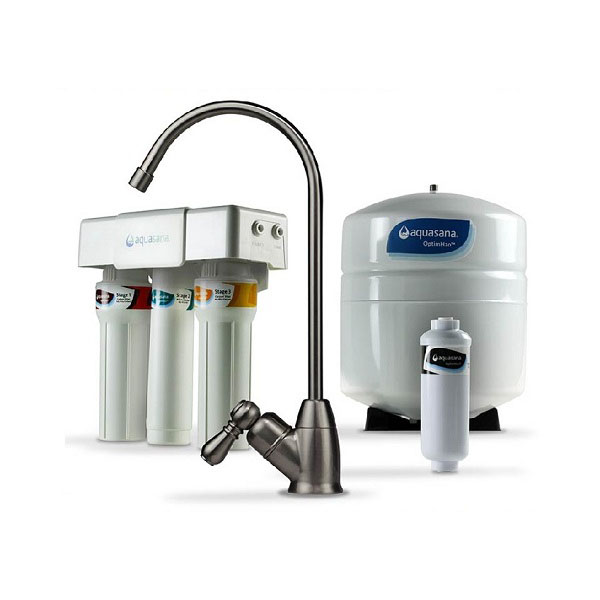
What Is The Working Process of the Reverse Osmosis System?
The reverse osmosis water filter system is an effective way to purify water for drinking and other uses. Reverse osmosis is a filtration process that removes ions, molecules, and particles from contaminated water by forcing them through a semi-permeable membrane. Through the use of pressure, the contaminants are filtered out while the clean water passes through to be collected on the other side.
The reverse osmosis water filtration process begins with pre-filtration where large particles such as sediment and dirt are removed from the incoming water source. This step prevents these particles from clogging up or damaging the membranes used in later stages of filtration.
The next step involves running the remaining liquid through semipermeable membranes which remove many dissolved solids and compounds like nitrates, calcium carbonate, fluoride, arsenic, and lead. Filtered water goes to the storage tank while the waste water from RO system flows down into the drains.
Pros And Cons of Reverse Osmosis Systems
Reverse osmosis filtration systems are becoming increasingly popular for households looking to purify their water supply. But how do you know if it’s the right choice for your home? Before you make a decision, it’s important to understand the pros and cons of reverse osmosis systems.
Pros:
Removes All Contaminants
Reverse osmosis is an effective method of water treatment that involves forcing water through a semi-permeable membrane to remove unwanted contaminants. By using pressure, the system is able to remove any particles and ions that are present in the source water, such as bacteria, viruses, metals, and even dissolved minerals.
The reverse osmosis process works by pushing the water through a membrane that contains microscopic pores. As the contaminated liquid passes through, all particles larger than 0.0001 micron are filtered out – leaving behind only clean, pure water molecules on the other side. This means that virtually all harmful substances can be removed from the source material before it reaches their destination.
Provides Pure Drinking Water
Reverse osmosis (RO) systems are becoming increasingly popular in households across the country as an effective way to provide high-quality drinking water. With a reverse osmosis system, homeowners can rest assured that their drinking water is free of contaminants like lead and mercury, two common pollutants found in traditional tap water.
The process of reverse osmosis works by passing unfiltered water from the main supply through a semi-permeable membrane. As the filtration process continues over time, only purified drinking water is left behind for consumption.
Improves The Taste of Drinking Water
Reverse osmosis (RO) systems are popular among homeowners who want to improve the taste of their drinking water. An RO system filters out impurities, such as chemicals and metals, and removes unpleasant tastes and odors from tap water. This type of filtration can also remove parasites and other contaminants that could be harmful if consumed. With an RO system installed in a home, families can enjoy drinking clean, great-tasting water right from the tap.
Better-Tasting Food
A top RO system will have the potential to revolutionize the way food tastes. The process removes particles, minerals, and other impurities from water to provide better-tasting food. Reverse osmosis works by applying pressure to force water molecules through a semi-permeable membrane. This allows only pure water molecules to pass through, leaving behind any unwanted substances or contaminants found in the source water.
The result of reverse osmosis is incredibly clean-tasting and odor-free water that can be used for cooking and drinking purposes. Not only does this provide tastier results for food, but it also keeps harmful bacteria at bay by removing any potentially dangerous contaminants from the source water supply.
Low Maintenance
Reverse osmosis systems have become increasingly popular as a water filtration option for homes and businesses in recent years. This is due to the fact that reverse osmosis systems are low maintenance, requiring minimal upkeep to keep functioning properly. Not only do they require less maintenance than other filtration methods, but they can also provide superior quality water compared to other solutions.
The main component of any reverse osmosis system is the filter membrane which needs to be changed every one or two years depending on usage and local water conditions.
Long-Term Savings on Water Bills
RO systems use a semi-permeable membrane to remove dissolved solids, bacteria, viruses, and other contaminants from drinking water supplies. As the demand for clean and safe drinking water increases, so too does the need for an affordable and efficient way to purify it.
The initial purchase price of an RO system is often more expensive than standard filtration units, however, these higher upfront costs are offset by the long-term savings on water bills caused by less frequent filter changes and improved system efficiency over time.
Multiple Options & Brands are Available
There are multiple brands of reverse osmosis systems that offer quality products to fit your individual needs and budget. Leading brands feature their own line of reverse osmosis systems with advanced technology for superior filtration performance. These models come equipped with multi-stage purification that helps reduce chlorine levels and other contaminants to supply fresh-tasting water straight from the tap without the need for bottled water. Depending on your lifestyle and budget, you have the option of purchasing one or more units to install throughout your house or office space.
Suitable For The Environment
By using a process of high-pressure filtration, these systems remove impurities from tap water in order to produce safe drinking water. Not only do they provide clean drinking water, but their design also makes them an environmentally friendly choice.
Reverse osmosis systems use filters to remove bacteria, viruses, heavy metals, and other contaminants from the water. The filter cartridges used by these systems can last up to six months before needing replacement, meaning that fewer resources are needed for maintenance compared to traditional filtration methods.
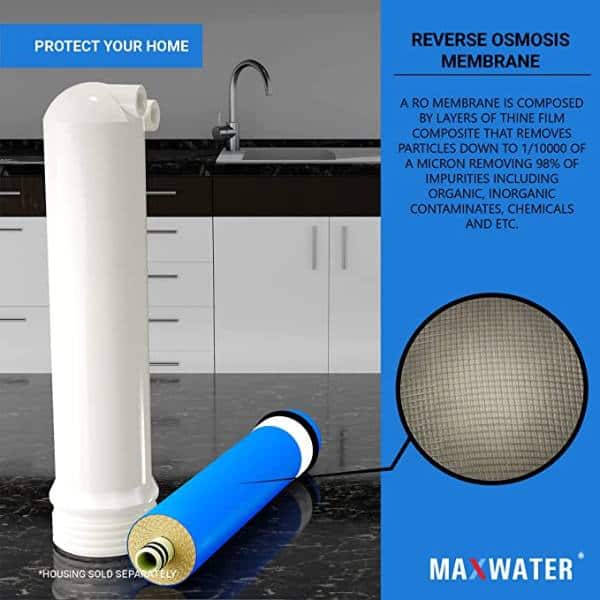
Cons:
Reverse osmosis systems are used in both residential and commercial settings to provide clean, safe drinking water. While these systems can be beneficial under certain circumstances, there are some potential drawbacks that should be considered before opting for a reverse osmosis system.
Expensive
One of the primary issues with reverse osmosis systems is their cost. In addition to the upfront costs for purchasing and installing the system, ongoing maintenance expenses such as filter replacements can quickly add up over time. Moreover, because many pollutants must be filtered out of the water supply, multiple stages of filtration may need to be employed which will further increase expenses.
Generates Wastewater
Another problem with reverse osmosis systems is that they tend to waste a large amount of water during operation. The contaminants should be removed and washed by water resulting in what we call brine water or reject water. This can be a costly mistake in regions where water is scarce.
Requires Space and Installations
A reverse osmosis system may be a great addition to your home or business, but it requires some space and some installations. This can be a problem for those with very little space or with no access to plumbing to install such a system.
So, when buying a system, it is important to keep in view both pros and cons of reverse osmosis water filters.
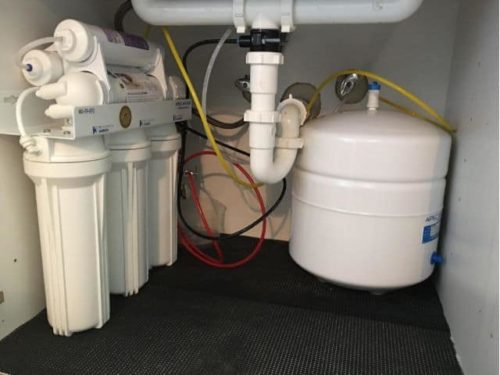
Final Thoughts
Reverse osmosis filters are a great investment for anyone who is looking to get the cleanest, most pure water possible. They’re a common choice for both residential and commercial use, offering reliability and durability even after years of use. With the right RO system, you can have water that is free from contaminants and ready to be used for cooking, drinking or cleaning.
However, there are some downsides that you should consider before investing in one of these systems. While they are efficient, they can be expensive to install and maintain. If you don t have the space in your house or business or don’t have the budget, you may want to consider a different option.
